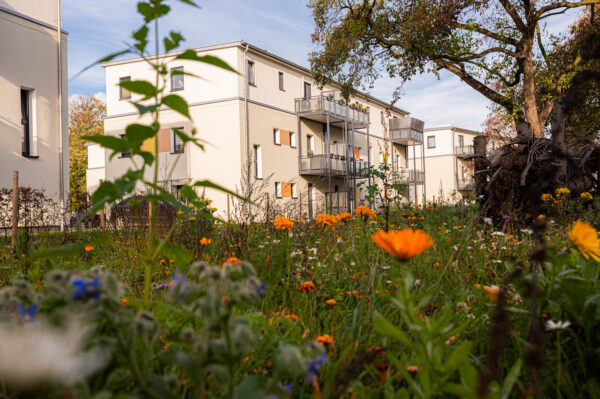Material Topics
GRI
2-26
2-29
3-2
Materiality Analysis
A home is a basic human need. We meet this basic need by creating new living space and letting existing living space. We do so responsibly and sustainably by paying attention to the environmental footprint of our buildings and by having committed to the goal of virtually climate-neutral housing stock by 2045. We also do so by living up to our social responsibility and offering residential units at fair prices for all different groups within society. We do so through a governance structure that meets high value benchmarks and that is well suited to being perceived as trustworthy and reliable by our stakeholders.
Vonovia classifies the company’s material sustainability topics based on two dimensions according to the double materiality concept: the relevance of social and environmental changes to the business and value creation (outside-in perspective) and the impact of the business model and company activities on the environment, society and the economy (inside-out perspective). As part of this process, the perspectives of our relevant stakeholder groups are taken into consideration in our assessment of the material topics.
Definition of the Material Topics
We identify and assess the impacts – both negative and positive – and their materiality (in terms of extent, scope and irreversibility) on and by the company in a continual process.
The Sustainability/Strategy department plays a decisive role here, bringing momentum to and sharing social changes with the organization as a facilitator. The department also supports and evaluates business processes and corporate measures, focusing on sustainability aspects. The team regularly exchanges information for this purpose internally with all relevant departments and externally with stakeholders and networks, and reviews the company’s media resonance. A GRI sector standard (pursuant to GRI 1-3b) has not yet been developed either for construction or real estate and is thus not yet applicable for Vonovia. The impacts usually associated with our sector were taken into consideration during our materiality analysis, however.
The basis for determining the material topics for Vonovia is a comprehensive materiality analysis that we last performed in 2020. The process was described in detail in the 2020 Sustainability Report. Key elements of the materiality analysis are the inclusion of internal and external stakeholders and information users in determining and prioritizing topics, determining threshold values for materiality in both dimensions (inside-out and outside-in) and the inclusion of the Management Board (through our sustainability committee) in determining the impacts and approving the selection of material topics and reporting on them. In order to be determined as a material topic, it is sufficient to reach the threshold for materiality in one of the two dimensions. We have therefore already been exceeding the upcoming requirement of the European Sustainability Reporting Standard (ESRS) of double materiality since 2020 and consider this a reflection of our corporate commitment to reporting as widely and transparently on material sustainable topics as possible.
Adjustments in the Reporting Period
Due to the merger between Vonovia and Deutsche Wohnen, we compared the materiality analyses of both companies back in 2021, assigning the Deutsche Wohnen sustainability topics to those of Vonovia.
In the summer of 2022, we once again performed a critical review of all topics against the backdrop of integration and consolidated reporting, as well as new regulations and changes in general conditions. This review resulted in us slightly upgrading individual topics (Protecting of biodiversity, Digitalization and data security, Human rights due diligence and supply chain) due to increased regulatory requirements (EU taxonomy and the Act on Corporate Due Diligence Obligations in Supply Chains) or higher impact assessments. No changes have been made to their assignment to the material topics.
Material Topics
The materiality matrix derived from the materiality analysis includes a total of 24 topics related to our sustainability efforts in five action areas. Ten of the 24 topics are considered material topics – these are covered in greater detail in this report due to their significance. The other 14 are considered important topics, and are covered in less detail.
The materiality matrix that is presented here applies to the entire Group and represents the leading system for the non-financial topics.
Materiality Matrix
GRI
3-2


